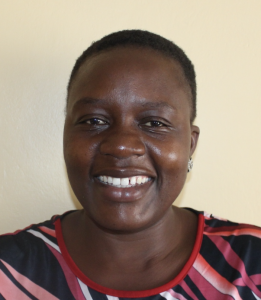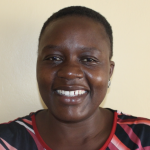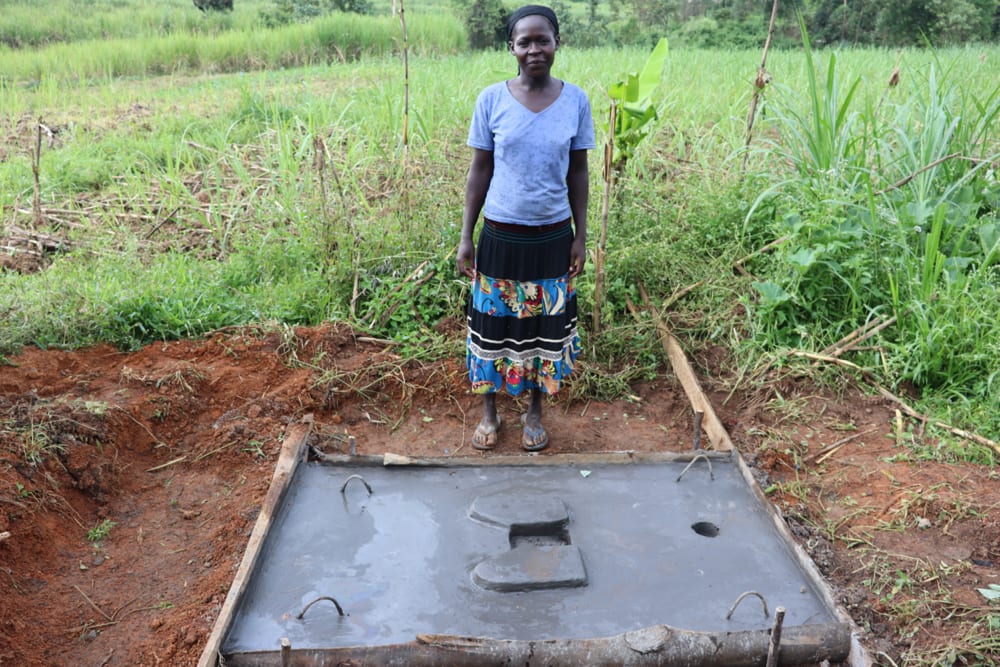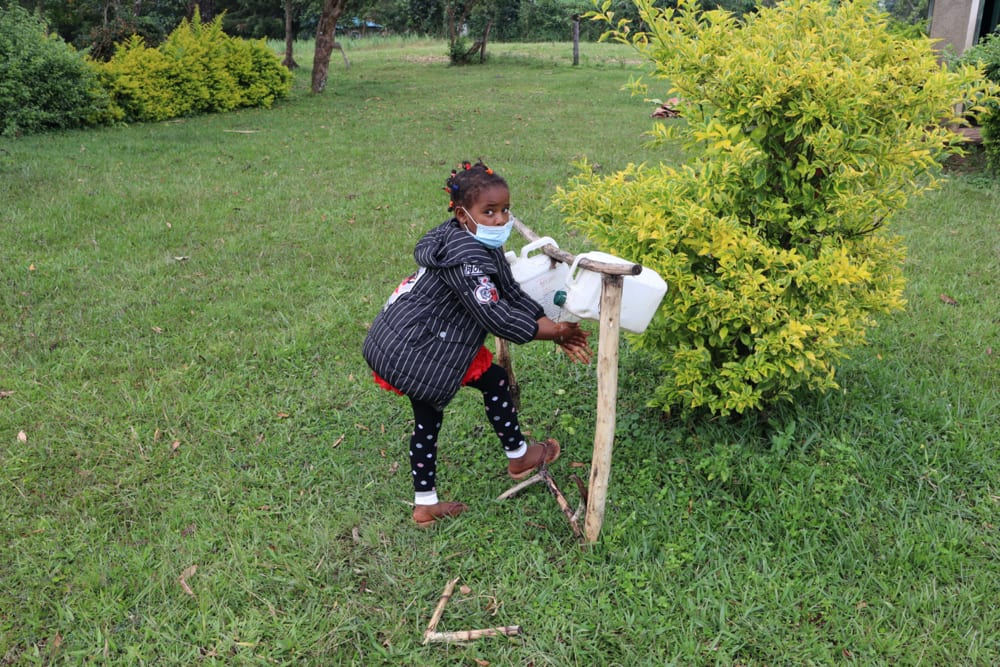At best, Busuku Spring looks like a muddy drainage trench dug through an overgrown garden.
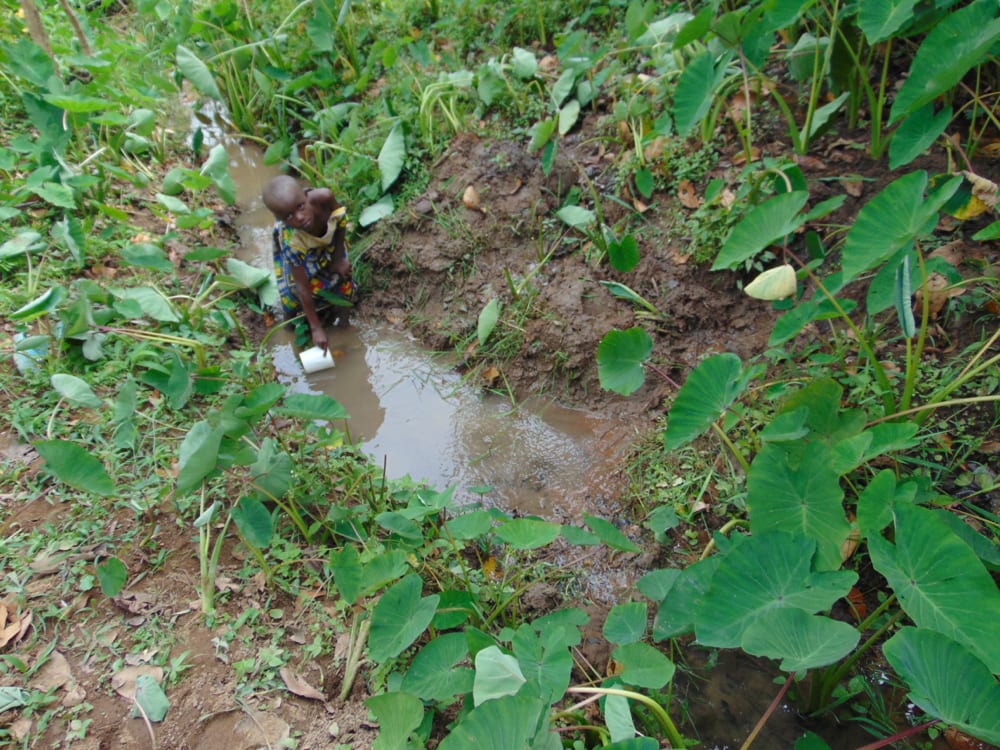
It is a great challenge to access the spring, especially during the rainy season, community members report. The area is muddy and slippery. The water is highly contaminated from being an open source, and it collects a lot of dirty surface runoff when it rains. Dogs drink directly from the spring, and as people fetch water they have to step inside the water thus contaminating it even further.
Lines develop at the spring every day as people have to wait to let the water settle between their turns fetching it. Otherwise, too much mud is stirred up while they try to fetch it. These crowds often lead to conflicts, and the children are normally the most affected as they have to wait until all of the adults have fetched water first before the kids can do the same.
All of this extra wait time builds up, meaning on some occasions community members take long hours at the spring. This is especially true in the morning and afternoon, when most people go to fetch water. The long waits have made some community members resort to waking up as early as 5:00 am to go to the spring to fetch water before the crowds surge in. Those who are not able to make it to the spring in the wee hours of the morning, however, have no choice but to wait in the long queues during the day. The crowding is particularly dangerous during the pandemic when community members are trying to avoid groups or being out in public for too long.
The lost time at the spring also interferes with the normal daily activities that have to be put on hold until water is found. As most people are farmers, they have to delay going to the field, costing them food and income. When school is in session, kids will sometimes miss their entire morning lessons just waiting to fetch water at the spring.
"My name is Faith, a pupil at Kakoyi Primary School. Each day as the sun shone in through the windows, I dreaded the experience of going to fetch water as I would wait and wait and even leave without a single drop of water due to the long queue. This meant that I would sometimes go to school on an empty stomach and upon reaching school I am punished by the teacher on duty. At times, I would be even told to clean the toilets on an empty stomach. I am glad that this will be a thing of the past. As I join class 8 next year, I look forward to excelling in my examinations as no more time will be wasted at the spring."
Consuming dirty water from Busuku Spring is a major cause of diarrhea and stomachaches for community members here, especially among children under age 5. Community members spend a lot of money and time seeking medical treatment for their water-related illnesses.
Despite its bad water quality, the spring remains one of the most reliable, year-round water sources in the area, so there is often little choice in using its water. The only alternative water source in the area is a hand-dug well, but it goes dry for part of the year and gives worse water than the spring - so poor in quality that people only risk watering their animals with it.
"My dream has finally come true and we shall now have clean water. I will no longer delay going to the farm and my children will no longer go to school on an empty stomach. Our children will be healthy and sicknesses will be a thing of the past. We are ready to contribute whatever materials that will be required for protection," stated an excited Rose Shangu reflecting on the planned spring protection.
What We Can Do:
Spring Protection
Protecting the spring will help provide access to cleaner and safer water and reduce the time people have to spend to fetch it. Construction will keep surface runoff and other contaminants out of the water. With the community’s high involvement in the process, there should be a good sense of responsibility and ownership for the new clean water source.
Fetching water is a task predominantly carried out by women and young girls. Protecting the spring and offering training and support will, therefore, help empower the female members of the community by freeing up more of their time and energy to engage and invest in income-generating activities and their education.
Training on Health, Hygiene, COVID-19, and More
To hold trainings during the pandemic, we work closely with both community leaders and the local government to approve small groups to attend training. We ask community leaders to invite a select yet representative group of people to attend training who will then act as ambassadors to the rest of the community to share what they learn. We also communicate our expectations of physical distancing and wearing masks for all who choose to attend.
The training will focus on improved hygiene, health, and sanitation habits in this community. We will also have a dedicated session on COVID-19 symptoms, transmission routes, and prevention best practices.
With the community’s input, we will identify key leverage points where they can alter their practices at the personal, household, and community levels to affect change. This training will help to ensure participants have the knowledge they need about healthy practices and their importance to make the most of their water point as soon as water is flowing.
Our team of facilitators will use a variety of methods to train community members. Some of these methods include participatory hygiene and sanitation transformation, asset-based community development, group discussions, handouts, and demonstrations at the spring.
One of the most important issues we plan to cover is the handling, storage, and treatment of water. Having a clean water source will be extremely helpful, but it is useless if water gets contaminated by the time it is consumed. We and the community strongly believe that all of these components will work together to improve living standards here, which will help to unlock the potential for these community members to live better, healthier lives.
We will then conduct a small series of follow-up trainings before transitioning to our regularly scheduled support visits throughout the year.
Training will result in the formation of a water user committee, elected by their peers, that will oversee the operations and maintenance of the spring. The committee will enforce proper behavior around the spring and delegate tasks that will help preserve the site, such as building a fence and digging proper drainage channels. The fence will keep out destructive animals and unwanted waste, and the drainage will keep the area’s mosquito population at a minimum.
Sanitation Platforms
At the end of training, participants will select 5 families that should benefit from new concrete latrine floors called sanitation platforms. Training will inform the community and selected families on what they need to contribute to make this project a success. They must mobilize locally available materials, including bricks, clean sand, and gravel. The 5 families chosen for sanitation platforms must prepare by sinking a pit for the sanitation platforms to be placed over.
All community members must work together to make sure that accommodations and food are always provided for the work teams. The families will then be asked to complete their latrines by constructing a superstructure over their platforms. These 5 sanitation platforms will then serve as examples for the rest of the community to replicate.

 Protected Spring
Protected Spring
 Rehabilitation Project
Rehabilitation Project










